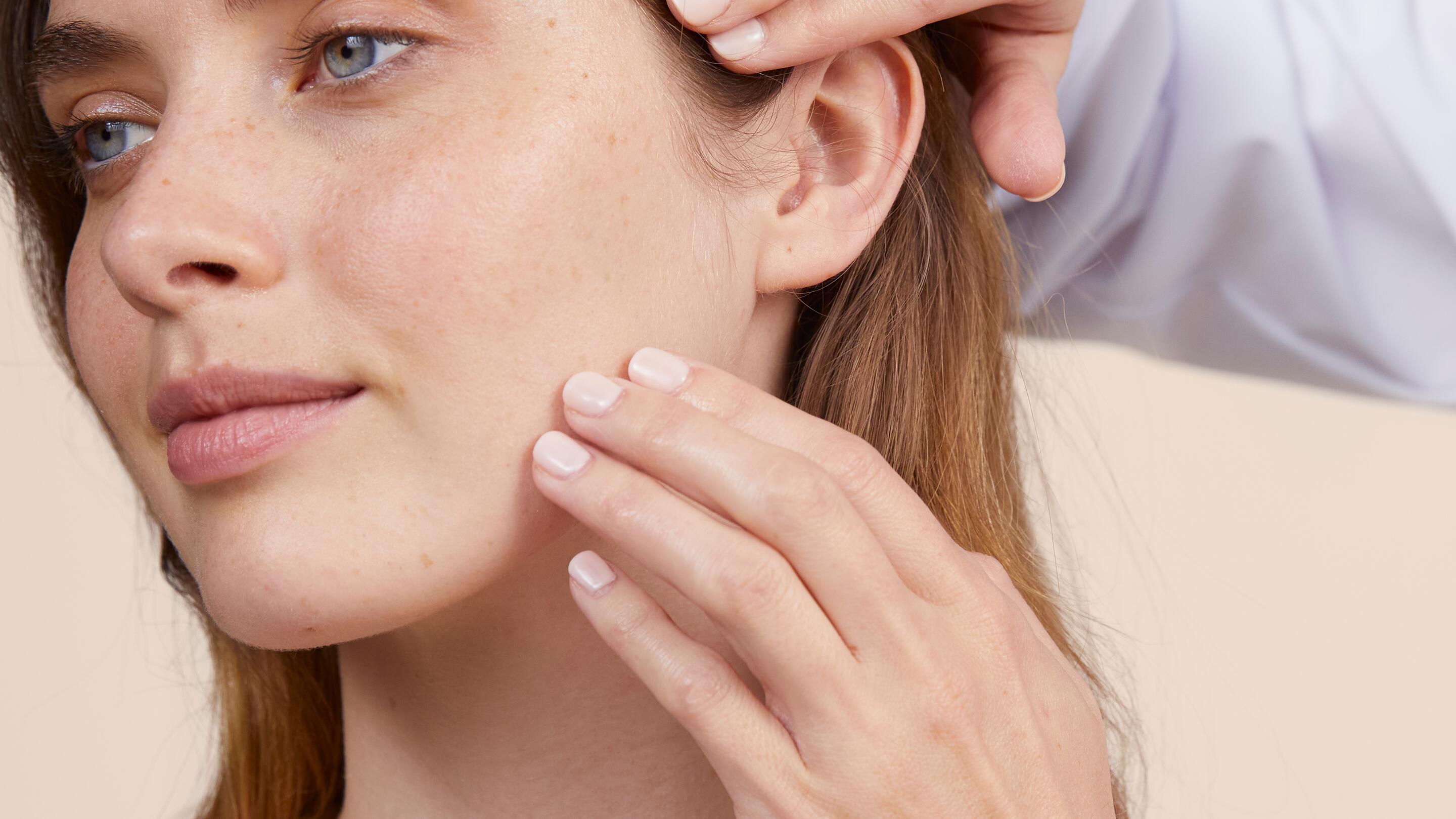Causes of acne-prone skin
The causes of acne are still the subject of some disagreement among researchers, but one thing remains certain: it is a hormonal and inflammatory condition.
Hormonal changes such as puberty, menstruation, pregnancy and menopause can increase the production of sebum and skin cells (corneocytes).
Other factors that can cause acne-prone skin or make it worse by clogging the pores or boosting the activity of the sebaceous glands:
- Stress causes a hormone, cortisol, which influences the behaviour of the sebaceous glands.
- Products and actions that strip the skin too excessively stimulate the production of sebum.
- Cosmetics and makeup that are too oily and non-comedogenic clog the pores.
- A genetic predisposition.
- Smoking.
- Some medicines.
How do you recognise hormonal acne-prone skin?
Hormonal acne-prone skin in adults is caused by a hormonal change that stimulates the sebaceous glands responsible for the appearance of spots on the lower face. It is distinguished from adolescent acne by the location of lesions in a U-shape around the chin and on the neck.
Conversely, pubescent acne-prone skin is visible all over the face, especially on the T-zone, but also on the neck, chest, shoulders and upper back.
Acne-prone skin in adults can also develop into inflammatory spots that can leave scars. On skin with little sebum, they dry out and become easily irritated by inappropriate products.
The timing of the symptoms is also a clue: if the spots occur once a month, at the same time as your period, it’s most likely a hormone-related outbreak. Note that the spots tend to reappear in the same places where the pores were dilated by the previous spots.
How do you take care of acne-prone skin?
To reduce blemishes, find a skincare routine for acne and stick with it, perseverance will be key to your routine’s success.
Cleanse your face twice a day with a cleanser specially designed for oily and acne-prone skin. In the morning and/or evening, Cleanance Cleansing Gel purifies the skin, reduces excess sebum and mattifies the skin for less shine.
Then, apply a product suitable for your skin imperfections – non-comedogenic mattifying moisturiser in case of shine, anti-imperfection in case of blackheads and pimples, or smoothing in case of residual marks, and each one suitable for your skin’s needs and your age.
How long does acne-prone skin last?
In adolescents, acne-prone skin lasts on average three to four years and disappears by the age of 18 to 20. If left untreated, this period may last longer.
It can also reappear in adulthood following hormonal disturbances encountered mainly in women (pregnancy, menstruation, menopause).







